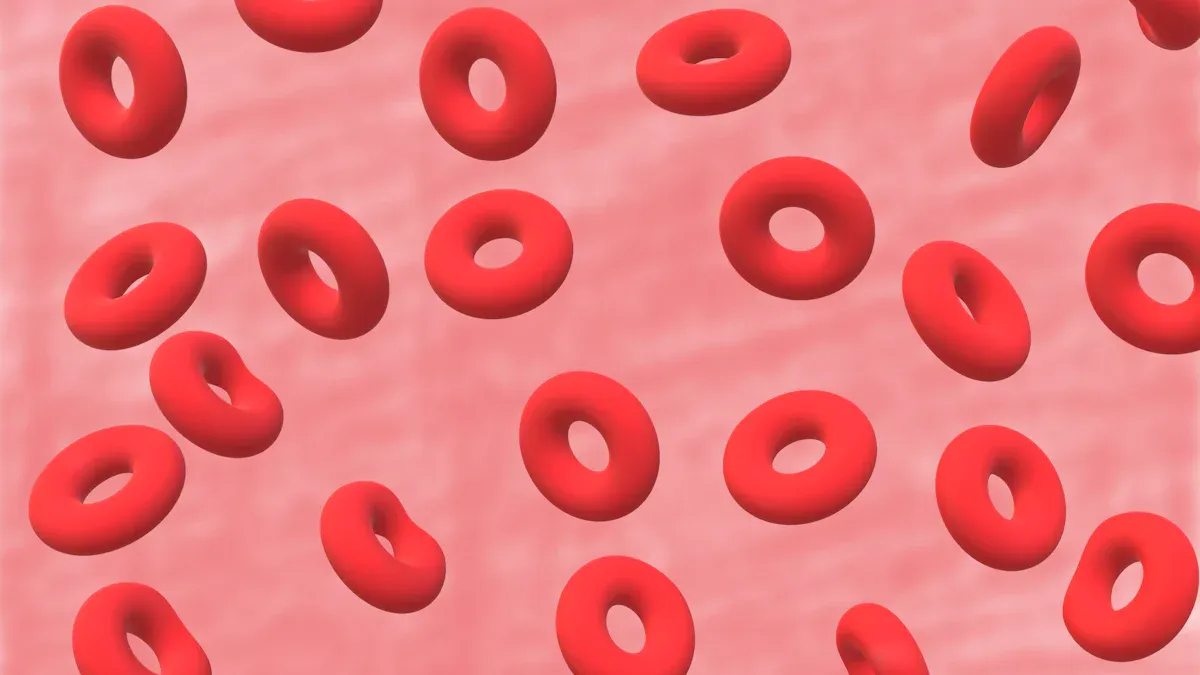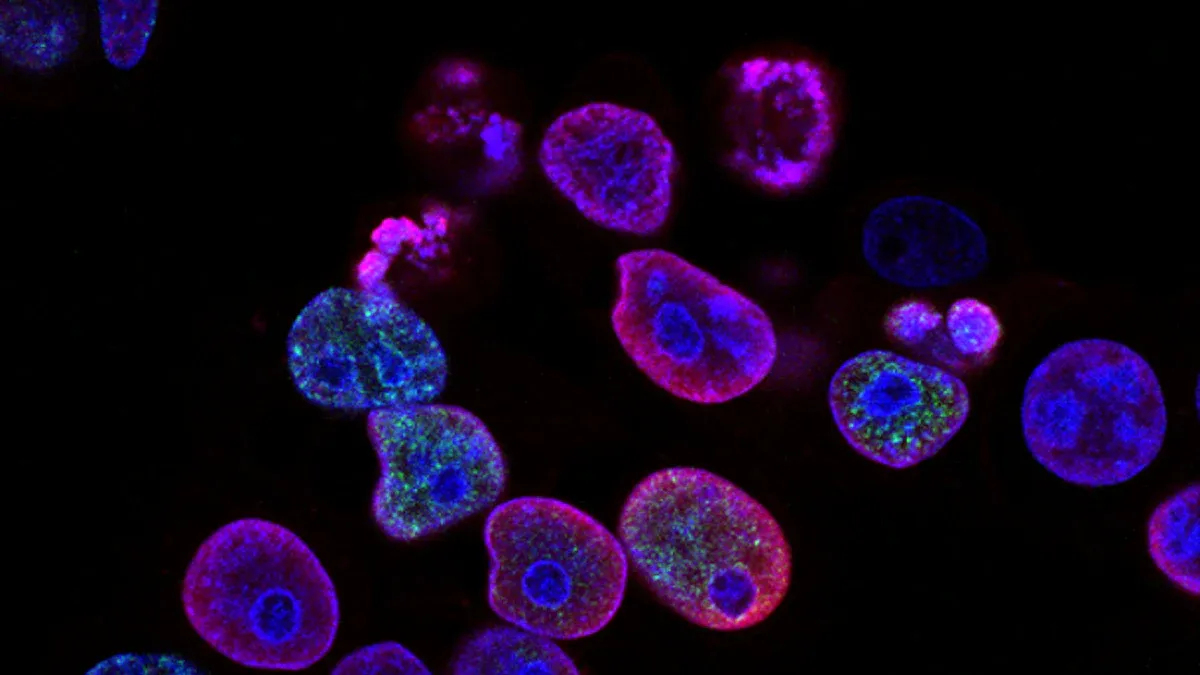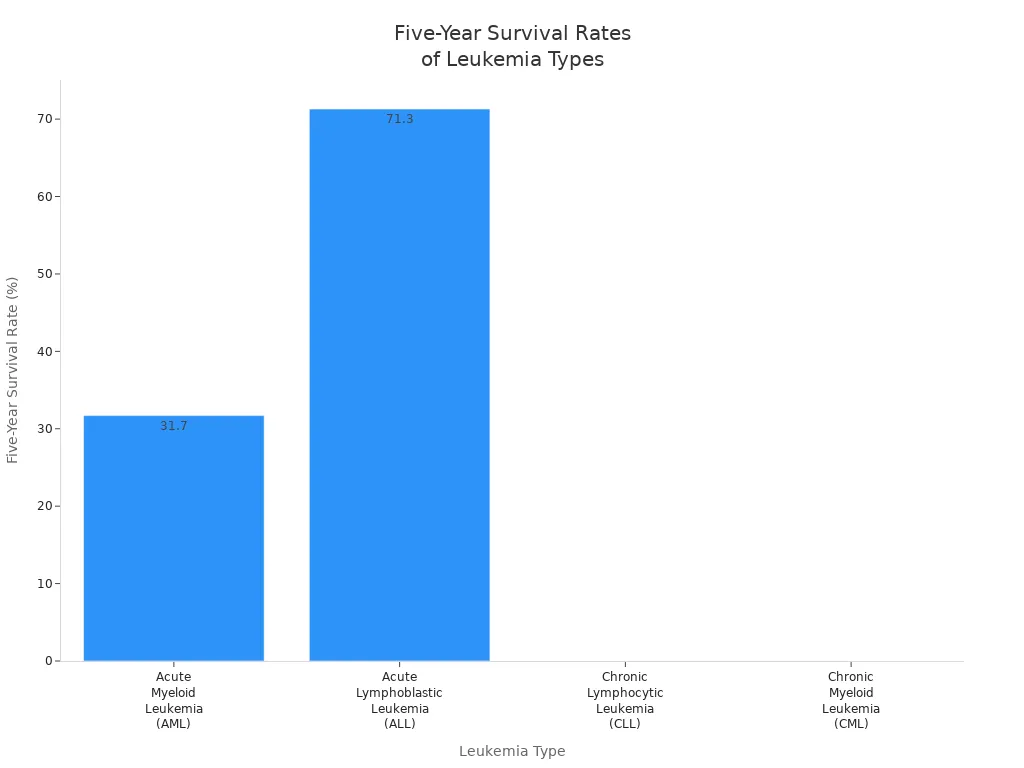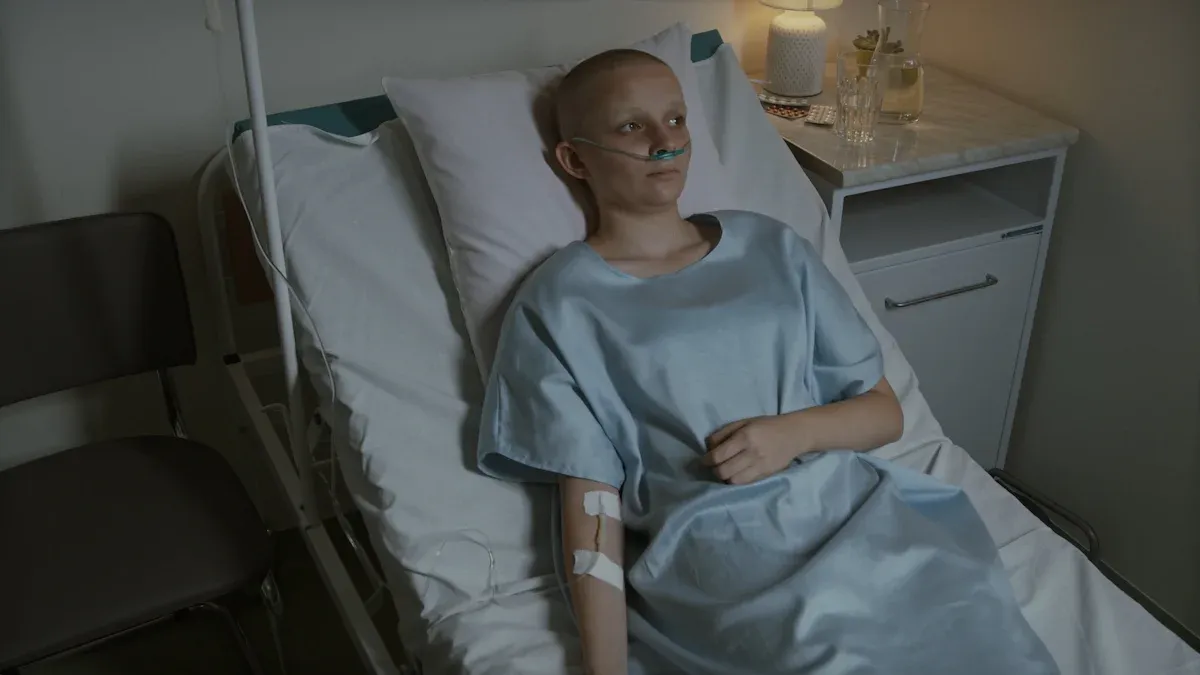What Is Acute Myeloid Leukemia in Simple Terms

Acute myeloid leukemia, or AML, is a fast-growing blood cancer that starts in the bone marrow, which works like a factory for blood cells. Think of the bone marrow as a busy workshop—when AML happens, broken machines make too many unhealthy cells. Knowing about AML matters because it mostly affects older adults, though anyone can get it. Recent studies show the number of new cases has almost doubled worldwide since 1990. Many people think leukemia is just one disease or only affects kids, but AML is different and most common in older adults. What Is Acute Myeloid Leukemia? Simple Explanation helps to clear up these common myths and makes understanding easier.
Key Takeaways
Acute myeloid leukemia (AML) is a fast-growing blood cancer that starts in the bone marrow and causes unhealthy cells to crowd out normal blood cells.
AML develops from genetic changes in blood-forming cells, leading to too many immature cells that cannot fight infections or carry oxygen properly.
Early diagnosis and treatment, including chemotherapy and stem cell transplants, improve survival chances, while avoiding smoking and harmful chemicals may lower risk.
What Is Acute Myeloid Leukemia? Simple Explanation

AML and the Bone Marrow
The bone marrow acts like a busy factory inside the bones. It makes all the different types of blood cells the body needs. In a healthy person, this factory works smoothly. It produces red blood cells to carry oxygen, white blood cells to fight infections, and platelets to help stop bleeding. Each cell type has its own job, and the bone marrow keeps everything in balance.
When acute myeloid leukemia (AML) develops, this balance breaks down. The bone marrow starts making too many immature cells called blasts. These blasts do not work like normal blood cells. They crowd out the healthy cells, so the body does not get enough oxygen, cannot fight infections well, and bruises or bleeds more easily.
Researchers have found that AML changes the bone marrow in several ways:
AML begins with changes in the DNA of blood-forming stem cells. These changes cause the cells to grow out of control.
The abnormal blasts take over the bone marrow, pushing out healthy cells.
AML cells release special signals that change the environment inside the bone marrow. These signals can block the growth of healthy bone and blood cells.
The bone marrow’s “factory floor” becomes crowded and disorganized, making it hard for normal blood cells to develop.
Note: AML can also make the bone marrow less able to support healthy blood cell growth by damaging the cells and structures that help blood cells mature.
How AML Develops
What Is Acute Myeloid Leukemia? Simple Explanation often starts with a single cell in the bone marrow that gets a genetic mistake. This mistake, or mutation, can happen in several important genes. These genes control how cells grow, divide, and mature. When they change, the cell starts to grow too fast and does not turn into a healthy blood cell.
Scientists have learned that AML develops through a series of steps:
A stem cell in the bone marrow gets a mutation in its DNA.
This cell divides and makes more cells with the same mistake.
Over time, more mutations can happen, making the cells even more abnormal.
These abnormal cells, called myeloid blasts, build up in the bone marrow and blood.
Here is a table showing some of the main genes involved in AML:
Functional Category | Representative Genes and Mutations |
|---|---|
Signal transduction genes | FLT3, NRAS, KRAS, c-KIT, PTPN11 |
DNA modification genes | DNMT3A, IDH1/2, TET2 |
Chromatin modifiers | MLL-fusions, ASXL1, EZH2, MLL-partial tandem duplication |
Multi-function gene | NPM1 |
Chimeric or mutated transcription factors | PML/RARA, AML1/ETO, CBFB/MYH11, CEBPA, AML1 |
Tumor-suppressor genes | TP53, PHF6, WT1 |
Spliceosome genes | SF3B1, SRSF2, U2AF1 |
Cohesin complex genes | SMC1A, SMC3, RAD21, STAG2 |
What Is Acute Myeloid Leukemia? Simple Explanation also includes the idea that these genetic changes can happen in different ways. Sometimes, parts of chromosomes swap places, break off, or get lost. These changes can turn on genes that make cells grow too much or turn off genes that keep cells under control.
Chromosomal translocations can activate genes that make cells multiply.
Deletions can remove genes that stop cancer.
Inversions and duplications can also disrupt normal cell function.
As these changes build up, the bone marrow fills with blasts. These blasts do not mature into healthy blood cells. Instead, they stay stuck in an early stage and keep multiplying. This is why AML is called a fast-growing or “acute” leukemia.
What Is Acute Myeloid Leukemia? Simple Explanation shows that AML is more aggressive than other types of leukemia. It can spread quickly to other parts of the body, such as the liver, spleen, or brain. Without treatment, AML can become life-threatening in just a few weeks or months.

Doctors and scientists continue to study AML to find better treatments. They hope to learn more about how these genetic changes happen and how to stop them. What Is Acute Myeloid Leukemia? Simple Explanation helps people understand why early diagnosis and treatment are so important.
Causes, Risks, and Symptoms
Causes and Risk Factors
Doctors know that acute myeloid leukemia starts when certain changes happen in the DNA of blood-forming cells. These changes, called mutations, make the cells grow out of control. Sometimes, parts of chromosomes swap places or break off, which can also lead to AML.
Many things can raise a person’s risk of getting AML. Some of the most common risk factors include:
Being male (men have a slightly higher risk)
Exposure to chemicals like benzene and formaldehyde
Certain blood disorders, such as myelodysplastic syndrome
Inherited genetic conditions, like Down syndrome or Fanconi anemia
Family history of AML
People who work with paints, pesticides, or fertilizers may also have a higher risk, but the evidence is not always clear. Most people with AML do not have any known risk factors, so doctors still have a lot to learn about why it develops.
Tip: Avoiding tobacco and limiting exposure to harmful chemicals may help lower the risk, but not all cases can be prevented.
Common Symptoms
AML can cause many symptoms, but they often look like common illnesses at first. Some of the most frequent symptoms include:
Bruising easily or bleeding more than usual (like nosebleeds or bleeding gums)
Frequent infections or fevers
Pale skin or looking washed out
Weight loss or loss of appetite
Bone or joint pain
Some people may notice headaches, confusion, or vision changes if the leukemia cells build up in the brain. Swollen gums or a swollen belly can also happen if the liver or spleen gets bigger. These symptoms usually appear quickly and get worse fast, which makes AML different from other blood problems. If someone has these signs, they should talk to a doctor right away.
Diagnosis, Treatment, and Outlook

How AML Is Diagnosed
Doctors use several tests to find out if someone has AML. First, they check a blood sample with a Complete Blood Count (CBC) and a blood smear. These tests show if there are too many or too few blood cells and if there are immature cells called blasts. If the results look suspicious, doctors take a small sample from the bone marrow using a needle. This test, called a bone marrow biopsy, helps confirm AML by showing if there are at least 20% blasts.
Other tests help doctors learn more about the leukemia cells:
Flow cytometry and immunohistochemistry check for special markers on the cells.
Cytogenetic tests look for changes in chromosomes.
Molecular tests find gene mutations that can guide treatment.
These tests together give a clear and reliable diagnosis. Most people get diagnosed within days or weeks after symptoms start, since AML moves quickly.
Treatment Options
AML treatment usually starts right after diagnosis. The main treatment is chemotherapy, which kills the leukemia cells. Some people may need a stem cell transplant, where doctors replace the sick bone marrow with healthy cells.
Doctors also use new treatments, like targeted therapies and immunotherapy, especially for people with certain gene changes.
Here’s a quick look at some options and their results:
Treatment | Who Gets It | Success Rate/Outcome |
|---|---|---|
Chemotherapy | Most patients | |
Stem cell transplant | Some adults, high risk | Up to 54% 5-year survival |
Targeted therapies | Patients with mutations | Over 75% in some groups |
Children and adults get different treatments because their bodies and leukemia types are not the same.
Prognosis and Prevention
AML can be tough to treat, but some people do very well, especially with early care. The five-year survival rate is about 32%. Younger people and those who respond well to treatment often have better outcomes. Age, genetics, and how well the leukemia responds to treatment all play a role.
Doctors cannot usually prevent AML, but avoiding smoking and harmful chemicals may lower the risk. Early diagnosis and fast treatment give the best chance for recovery.
Acute myeloid leukemia can feel overwhelming, but support exists for patients and caregivers.
Regular follow-up care and open conversations with doctors help manage health.
Support groups, organizations, and resources offer guidance and hope.
Anyone with questions about What Is Acute Myeloid Leukemia? Simple Explanation should reach out to a healthcare provider.
FAQ
What is the difference between AML and other types of leukemia?
AML grows fast and starts in myeloid cells. Other leukemias may grow slower or start in different blood cells. Doctors use tests to tell them apart.
Can children get AML?
Yes, children can get AML. Most cases happen in adults, but doctors do see it in kids. Treatment plans look different for children.
Is AML contagious?
No, AML is not contagious. People cannot catch it from someone else. It starts from changes inside the body, not from germs or viruses.
ℹ️ Explore more: Read our Comprehensive Guide to All Known Cancer Types for symptoms, causes, and treatments.
#BanishCancer
See Also
Understanding Mast Cell Leukemia Symptoms and Treatment Options
Breaking Down Acute Biphenotypic Leukemia For Easy Understanding
Treatment Options For Acute Myeloid Dendritic Cell Leukemia
Simplified Insights Into B-Cell Prolymphocytic Leukemia Explained
Recognizing Acute Lymphoblastic Leukemia And Its Common Symptoms
